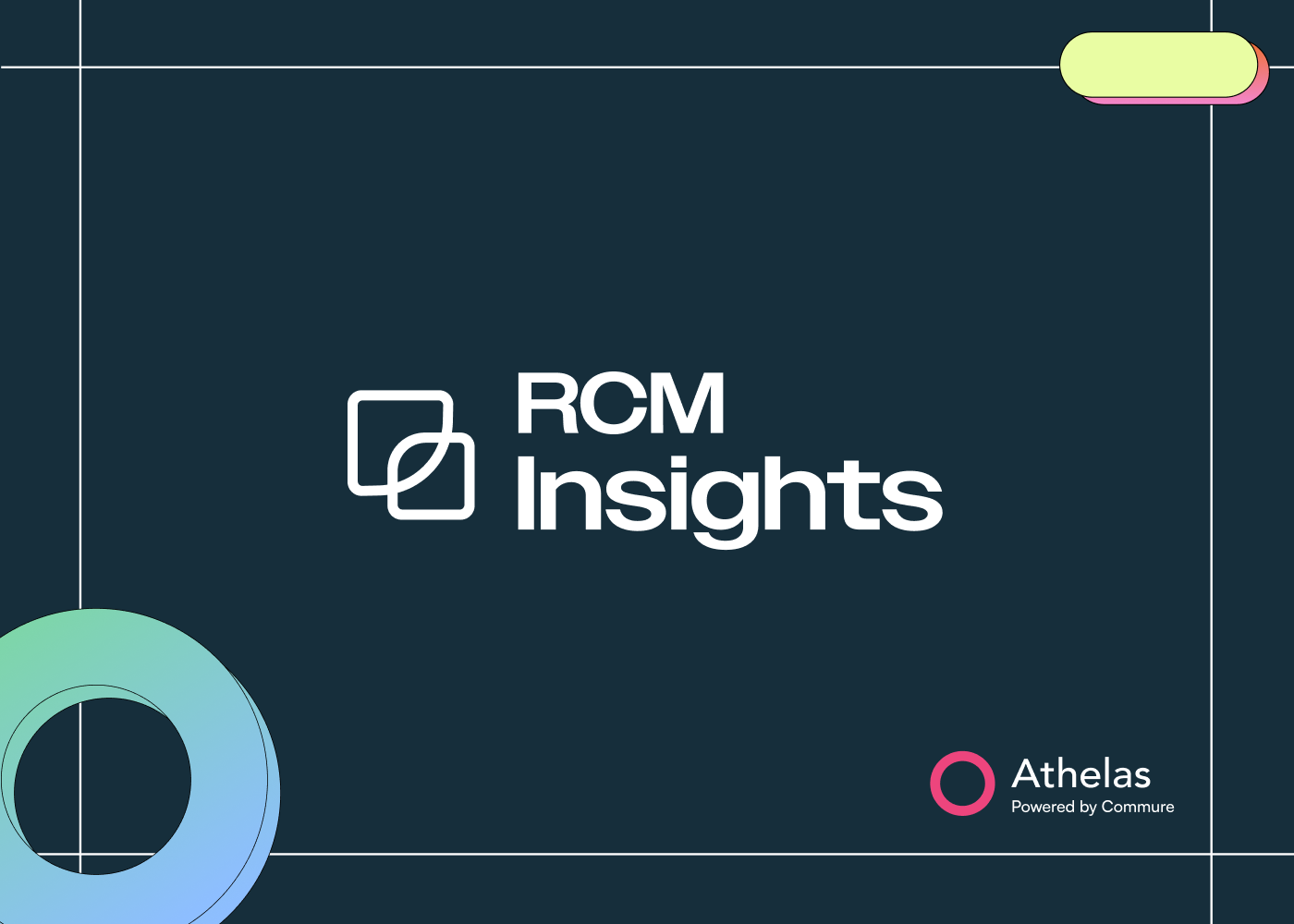In this episode, we sit down with Rachel Sitterson, Associate Director of Operations at Precision Imaging Centers in Jacksonville, Florida. With nearly a decade of experience rising through the ranks of the organization, Rachel shares how operational excellence, team culture, and patient experience intersect in modern imaging care. She discusses Precision Imaging’s commitment to innovation and what it takes to build a thriving, people-first healthcare organization.
Transcript:
Hersh:
Rachel, thanks so much for joining us today. We appreciate it. We'd love to start by understanding your background, how you got into healthcare, and what you do today.
Rachel:
Yeah. So I started at the front desk check-in at an imaging center, Precision Imaging, and then really just moved into a lot of different roles. I moved to the back, helping get clinical information, managing the front desk for a little bit, assisted the radiologist on clinical concerns, liaised with referring providers, and then moved into the call center scheduling atmosphere. Now, I handle authorizations, eligibility, and cost estimates. So I've worked in a lot of different departments and gotten to see how everything works together to make a patient experience.
Hersh:
That's awesome. What does a day in your life look like? For folks that don’t know or those with more experience on the clinical or revenue cycle side, what does your day look like?
Rachel:
I spend a lot of time listening—to employees and to patients—looking for problems before they start. I try to be as preventative as possible. If we get feedback on something that isn’t working, I think about what we can do systematically to change it, rather than just sending an email saying, “Hey, you did this wrong.” It’s about changing the workflow or system so the issue doesn’t repeat. This goes from the moment a patient calls our center to when they get their radiology report—streamlining that process and ultimately their bill.
Hersh:
And what does your team look like today? What are the biggest functions, and how do you spend your time with different teams?
Rachel:
We have operators, tiered schedulers for different modalities, an authorizations department, preregistration verifications, and intake. My focus is on one-on-ones, checking in with them, and engaging on how to make systems better. I ask, “What’s slowing you down? What’s inefficient? Can we fix it or find a workaround?” It’s all about improving the process for both employees and patients.
Hersh:
You actually started on the front desk and eventually moved into leadership. What was that transition like?
Rachel:
Honestly, I got pulled in a bit. As the front desk person, I noticed issues affecting the patient experience and offered solutions. That led me into a preventative role—finding problems before they blow up—and eventually into leadership. The goal was to address issues before they became massive within the company.
Hersh:
Almost like being preventative in clinical care, you applied that same philosophy here.
Rachel:
Exactly. We want to avoid situations where patients arrive without authorization, with wrong estimates, or scheduled for the wrong test. Being proactive prevents these issues.
Hersh:
The breadth of teams you’re leading is impressive. What insights have allowed you to be successful?
Rachel:
Being on the front end myself was key. Many managers haven’t done the job themselves and don’t understand the daily reality. Also, having strong staff—supervisors, team leads—helps the patient experience. Happy employees lead to happy patients.
Hersh:
In terms of scale, what are we talking about?
Rachel:
About 600-700 appointments per day, 3-4,000 per week. To scale, we departmentalized roles, like breast imaging, to ensure mastery. We also built rules to apply up front, so patients get accurate estimates before receiving a bill.
Hersh:
Let’s talk tooling. How do rules and technology fit into your processes?
Rachel:
Some rules are straightforward, like fixed co-pays for preferred imaging partners. Others are more complex. We need AI to recognize trends, like recurring copay patterns, and suggest actions—even if we don’t know exactly why the insurance algorithm works that way.
Hersh:
And your relationship with RCM?
Rachel:
It’s been a balance. Some front-end tasks aren’t realistic for RCM to do for every patient, so we try to streamline and limit patient intrusion while still giving accurate estimates.
Hersh:
Authorizations are sensitive. Mistakes can delay procedures.
Rachel:
Absolutely. Patients get upset when insurance denies tests. We educate doctors without giving them the answers, so we submit correctly and avoid flat-out denials. It’s been a challenge for independent testing facilities.
Hersh:
High-deductible plans are more common now. How does that impact patients?
Rachel:
Patients often misunderstand their policies. If we misapply a plan and the test cost is off by a few hundred dollars, it’s a big deal. Accurate upfront estimates build trust and prevent surprise billing.
Hersh:
How do you educate patients on costs, copays, and deductibles?
Rachel:
It’s tricky. Patients often learn as they go. We provide prep instructions, cost estimates, and aim for transparency. Staff training is key. Over time, patients better understand the process.
Hersh:
What excites you about implementing new technology?
Rachel:
AI assistance will help communicate with patients more effectively, reduce human error, and improve upfront estimates. For authorizations, AI could review policies, compare them to clinicals, and predict the likelihood of approval—reducing delays.
Hersh:
Patient experience is critical. Any stories of positive interactions?
Rachel:
It’s about care from the first call. Proper scheduling, prep instructions, accurate cost estimates, and helping patients navigate insurance. When staff go the extra mile—like three-way calls with insurance—it leaves a lasting impression.
Hersh:
What do you wish people understood about your scope?
Rachel:
We’re human; mistakes happen. The goal is to improve processes so errors are less likely. It’s about guiding employees to make correct decisions with the information they have.
Hersh:
And your leadership philosophy?
Rachel:
Servant leadership. I help my team do their job and work alongside them. If there are 20 callers on hold, I jump in. Engagement should feel natural, not forced.
Hersh:
How do you screen and motivate staff?
Rachel:
I look for initiative and eagerness to learn, sometimes hiring those without experience. Motivation comes from natural engagement, camaraderie, and setting targets with rewards. Experienced hires can bring habits that aren’t ideal, so attitude matters most.
Hersh:
Looking ahead five to ten years, what excites you?
Rachel:
Creating the best possible patient experience. Making healthcare more like hospitality—transparent, caring, informative, and personalized. Leveraging technology to remove backend burdens so staff can focus on patient care.
Hersh:
Where do you see the biggest opportunities for improvement?
Rachel:
Order management. It starts the patient journey, and mistakes early affect everything downstream. Right now, manual data entry causes issues. A system that flags clinical or financial discrepancies upfront would be ideal.
Hersh:
And integrating all these processes?
Rachel:
A single operating system is key. Using multiple disconnected systems causes inefficiency. A unified platform with AI can streamline the lifecycle of the patient journey.
Hersh:
Anything else important to mention?
Rachel:
I’m just really excited to work together and see these improvements come to life.
Hersh:
Awesome. Thanks so much, Rachel. I appreciate it.
How do you bill medicaid? Improve retention without hiring?
Get ahead of 2025 CMS changes?
Schedule a demo with Athelas today to find out.



